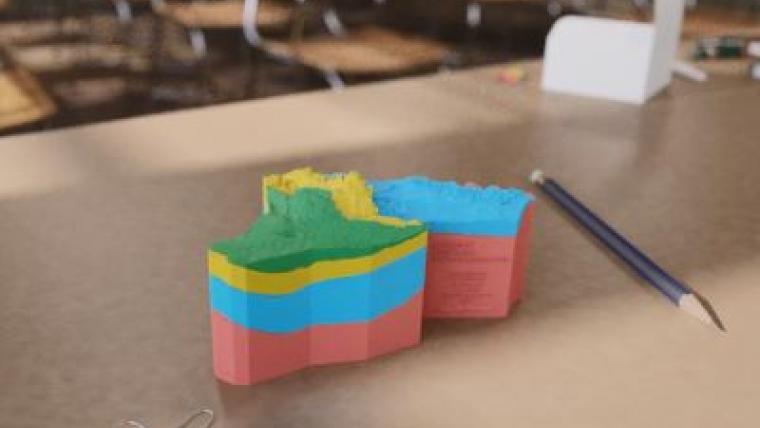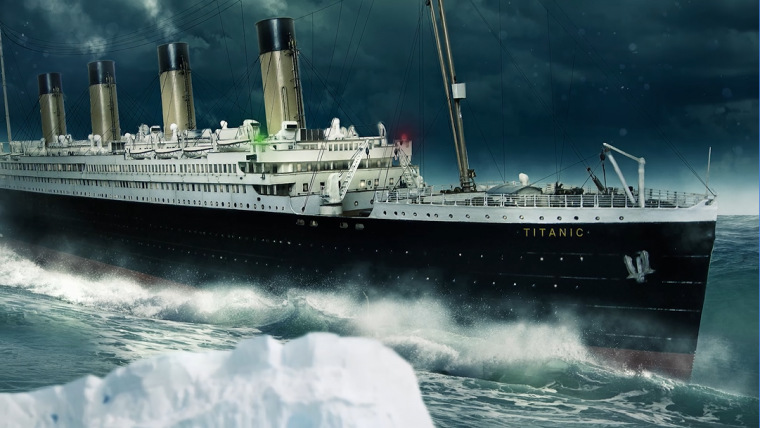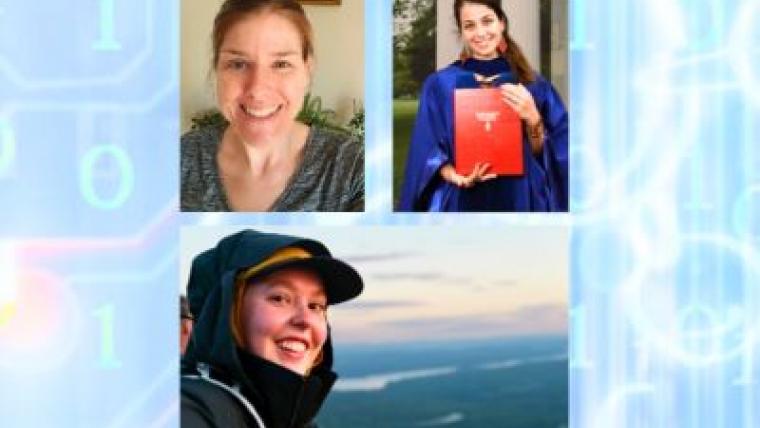Discovering microfossils that are a BILLION years old (Ask NRCan)
During a geological mapping expedition to the western Canadian Arctic in 2014, research scientist Rob Rainbird collected samples that yielded microfossils of a species of fungus that is about one billion years old. Rob joins us to share his experience in the field, as well as discuss his discovery.
Transcript
Joël Houle:
Welcome, everyone, to Ask NRCan. I'm your host Joël Houle, and this is our podcast series where we sit down with our experts to talk about the work that we do here at Natural Resources Canada, or NRCan for short. Today we'll be speaking with a research scientist who discovered microfossils of fungi that are about a billion years old. For those of you who are new to the show, we call the series Ask NRCan because we want to hear from you. The purpose of the show is to share with you not only the type of science that we do but also the reasons why we do it and how it relates to your life.
So, at the end of the episode if you have any questions on today's topic, head to Twitter and tweet at us using the hashtag #AskNRCan. Our experts will do their best to answer all your questions. We usually release an episode of Ask NRCan on the first Tuesday of each month, so make sure to subscribe so you don't miss an episode. Okay. Let's meet our guest.
Our guest today is scientist Rob Rainbird from the Geological Survey of Canada. Rob, how are you doing?
Rob Rainbird:
I'm well, thank you, Joel. Nice to be here.
Joël Houle:
Awesome. So during a geological mapping expedition of the Western Canadian Arctic in 2014, you collected samples that yielded microfossils of a species of fungus that is about a billion years old. Can you tell us a little bit about the expedition in question, where you were and what type of work you were doing?
Rob Rainbird:
Yeah, of course. Well, what we're doing is part of a program called GEM — that's Geo-mapping for Energy and Minerals. And the project, its main goal is to upgrade the geoscience knowledge of that region. It's a very poorly understood region. So one of the things we do is we make geological maps. So that's kind of the grounding for the type of work that we do. And in the course of doing the geological mapping, we collect rock specimens from all the different areas that we visit. And in the course of doing that work, I collected some special shale samples that I saw that had these black flecks in them. And that triggered something back in my mind from some work I'd done many years ago: that this was a unique type of shale sample that could yield microfossils. So I collected specimens of it in hopes that I could send it to a specialist for them to identify microfossils.
Joël Houle:
So why did you think that those little marks could be something that's worth looking into? That they were microfossils?
Rob Rainbird:
Well, I had done some work actually not that far away on Victoria Island for my PhD thesis. And I worked with a guy there who was also doing his PhD, and his specialty was microfossils, studying early life. And so he came out in the field with me and he was looking for these particular type of shale samples. So he, when I was with him, he showed me the kind of material that would yield the best microfossils. And then he took the samples back to the lab and analyzed them, and he found a lot of new species of microfossils, and we ended up publishing a couple of papers together on the work. And he later became quite famous, and now he's a professor at Cambridge University in the U.K.
Joël Houle:
How do we know how old those microfossils are? Is that something that the lab that you sent it to did? Is it something that you did specifically?
Rob Rainbird:
Yeah, that's something that we do here at the Geological Survey. So we didn't know the exact age of the layers that yielded the fossils. So we kind of try to figure it out by knowing the ages of rocks, older rocks that underlie the horizon where we find the fossils, and we also know the age of the layers that overlie the layer that has the fossils. And we have two different methods that we used for that.
So the rocks underlying specimens, we know that they're greater than a thousand million years old and that's because we analyzed sandstones from those layers and they have a mineral called zircon in them. And they are zircon grains that have come from rivers that eroded a terrain way to the south of the basin where these were being deposited. So the youngest grain of zircon in that sandstone is around a thousand million years old. So we know that that sandstone has to be older than a thousand million years old, because it can't incorporate something that's younger than that, right? But that is the youngest grain was around a thousand, so we know that the layers above that — that hold the shales — have got to be younger than a thousand million.
Joël Houle:
That's really interesting. So you tested its environment that was enclosed and not so much from microfossils themselves right?
Rob Rainbird:
That's right. Yeah. That's my job as a sedimentologist. I'm trying to understand the environment that these organisms are being deposited in.
Joël Houle:
So is there a reason we're not testing the actual microfossils themselves? Is it because we would destroy them or?
Rob Rainbird:
Well, we don't have the expertise to do that.
Joël Houle:
Okay.
Rob Rainbird:
We don't have labs that can. It's very specialized kind of work. They have to dissolve the samples in hydrofluoric acid — which there's not too many labs in the world that do that kind of work. There's only a few. So I knew of a couple of labs in Europe that did this kind of work. So, in fact, I approached my colleague that I'd worked with back when I was doing my PhD, and he was too busy. So he recommended another person in Belgium. So I contacted her, and she took the samples and analyzed them and found some really great fossils in there. So she thought that it was too big a project for her to take on herself, so she brought in a PhD student Corentin Loron. And so he started working on the specimens and found more exciting new species of fossils and including what he thinks are fungi.
Joël Houle:
That's really interesting. So what does this discovery tell us about the early evolution of life on Earth?
Rob Rainbird:
Well, one of the things that's probably the most important implication of the discovery is that it sheds new life on complex organisms like fungi and animals.
When those actually formed on the tree of life — so way back in the pre-Cambrian era, there were three branches to the tree of life, two of which were types of bacteria and then a third branch of more complex organisms. And that's where the complex organisms such as animals and fungi were on that branch. And that branch diverged at some point. So fungi diverged from animals. So our discovery means that, that branching must have occurred at least a thousand million years ago. And before that, the oldest known fungi were around 400 million years. So that pushes back the time when that branching occurred to at least a thousand million years ago. It could have occurred before that. But prior to this discovery, 400 million years was kind of the first oldest-known fungi.
Joël Houle:
That's really fascinating. Thank you so much Rob for being here today.
Rob Rainbird:
It was my pleasure, Joël.
Joël Houle:
So this is the end of the episode. But like always, it doesn't mean it's the end of our conversation. If you have any follow up questions for our experts, get on Twitter and tweet at us using the hashtag #AskNRCan. Also, if you're interested in learning more about the scientific work that we do at Natural Resources Canada, check out our online magazine called Simply Science. We have a ton of great content for you including articles, videos and previous episodes of this podcast. If you check out the podcast page for this episode, we'll have links available to any relevant material so you can learn more about what we talked about today.
The best way to find Simply Science is either to Google it or click on the banner from our website at nrcan.gc.ca. And if you like this episode and you're listening to us on Apple podcast, Google Play, Stitcher or SoundCloud, please leave a review and subscribe so you can check out any previous or future episodes. That's it for us today. Thank you for listening. We look forward to hearing from you, and we'll see you next time.
Page details
- Date modified:




